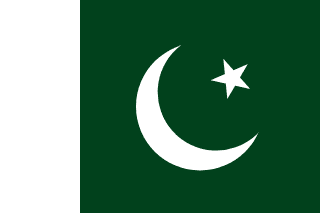Discover crucial maritime information about Pakistan, a strategic country bordered by the Arabian Sea. With a coastline stretching approximately 1,046 km, Pakistan has several major ports such as Karachi, Gwadar, and Port Qasim, which are essential for international maritime trade. This country is a key player in maritime connectivity between Central Asia and the Middle East. This maritime overview covers coastal geography, port infrastructures, maritime trade routes, as well as the economic and strategic impact of Pakistan's maritime sector.

Explore the strategic ports and maritime infrastructure of pakistan

Essential maritime information about Islamabad Port port for sea professionals

Essential maritime information about Keti Bandar Port port for sea professionals

Essential maritime information about Lahore Port port for sea professionals

Essential maritime information about Faisalabad Port port for sea professionals

Essential maritime information about Sialkot Port port for sea professionals

Essential maritime information about Karachi Port port for sea professionals

Essential maritime information about Port Qasim port for sea professionals

Essential maritime information about Gwadar Port port for sea professionals
Explore the strategic ports and maritime infrastructure of pakistan
Pakistan, located in South Asia, has a significant maritime frontage along the Arabian Sea. Its total coastline length is about 1,046 kilometers, extending from the borders with Iran in the west to India in the east. This geographical position gives Pakistan a strategic role in regional and international maritime trade. The Pakistani coast is dominated by various geographical features, including deltas, beaches, mangroves, and coastal desert areas, which influence maritime activities and port development in the region.
Pakistan includes several major maritime ports that play a crucial role in the country's international trade. Karachi Port is the largest and busiest, handling the majority of Pakistan's imports and exports. Located near the country's most populous city, it provides an essential connection for commercial flows. Port Qasim, located near Karachi, is also among the most important, specializing in the trade of raw materials and other industrial goods.
Gwadar Port, located further south, is a recent infrastructure that has grown in importance thanks to international investments, particularly Chinese in the framework of the Belt and Road Initiative (BRI). Gwadar aims to become a strategic maritime hub providing direct access to the Indian Ocean, facilitating the transit of goods to Central Asia and even Europe. These ports are equipped to accommodate large vessels, including container ships, oil tankers, and cargo ships, thus strengthening Pakistan's maritime capacity.
Maritime trade is vital to Pakistan’s economy, representing the majority of international goods transport. Main exports include textiles, rice, chemicals, and leather, while imports include hydrocarbons, machinery, and foodstuffs. The maritime routes around Pakistan are also strategic for energy security and regional transit.
However, Pakistan’s maritime sector faces certain challenges such as the need to modernize infrastructure, protect the coastal environment in the face of growing industrialization, and manage risks related to piracy and maritime security. Despite these obstacles, the Pakistani government is investing significantly in this sector, developing special economic zones and modernizing port facilities to enhance the country’s maritime competitiveness internationally.
Pakistan’s maritime outlook is promising as the country continues to strengthen its integration into global trade. The development of new port infrastructures and improvements in land connections help position Pakistan as a key maritime player between Asia, the Middle East, and Africa. This dynamism opens significant opportunities for trade, logistics, and international cooperation in the region.